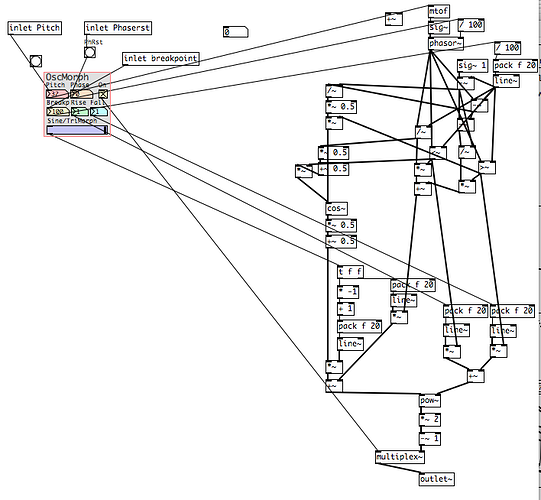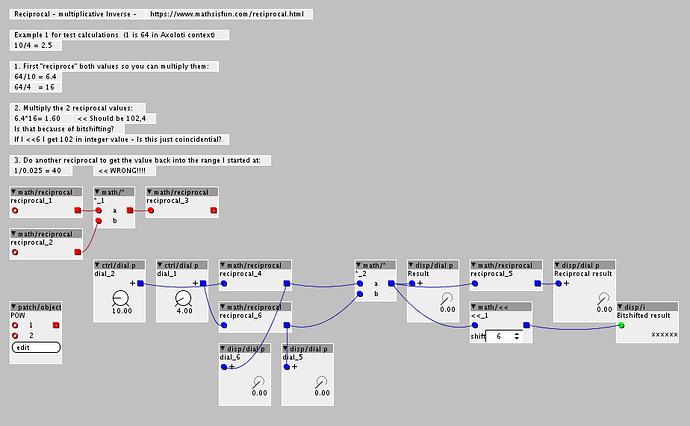Hey @SmashedTransistors
I been experimenting a bit with the reciprocal this morning and I am not sure I am using it correctly.
Anyway here is the project I am working on:
A patch I made in PD, which is basically a morph oscillator, that lets you morph between all the regular basic waveforms as saw/sin/tri and also square with a little modification to it and EVERYTHING in between. you can set rise and fall time, which can add a lot of "analog character". Or you can mix a saw and a sine as you like for more "analog character".
I have been looking at my friends old synths like the Arp and this oscillator can create waveforms that are very similar to many of the waveforms found in his synth collection, like the arp, like softened saw waves for example. The pd patch looks like this and everything works as intended:
I tried doing some calculations at k-rate first, but the result is not correct, so I am pretty sure I am not doing it right:
Patch with calculations from the picture:
MORPH OSC RECIPROCAL Calculations.axp (6.2 KB)
And finally here is the main patch with the morph osc:
MORPH OSC PD VERSION 1.3 FUCKED .axp (22.2 KB)
As you can tell from the name, it doesnt work. No sound comes out at all and the Axometer goes crazy jumping up and down to 100%. Yikes! There are a couple of things that could be wrong, the division/reciprocal stuff and a POW function, I am not 100% sure I made correctly.
For the fun of it I then tried to connect the phasor directly to the output and wow, some harsh noises coming from it.. And Axometer is going insane. Try mess with the breakpoint dial and the pitch... Instant, harshcore  Even thought the breakpoint it not even connected to the phasor in anyway at all and should not be influencing the sound at all. Try it
Even thought the breakpoint it not even connected to the phasor in anyway at all and should not be influencing the sound at all. Try it  :
:
MORPH OSC PD VERSION 1.3 FUCKED FUN.axp (22.2 KB)
One last thing I am a little bit in doubt about is using "POW" function in Axoloti. See the first PD picture, the POW is used as last step, lifting the left side to the power of the right side........ I tried making a pow function like this:
outlet_out = pow(inlet_1,inlet_2);
(code in samplerate)
....
Which should give you inlet 1 lifted to the power of inlet 2, right? This should be allowed at sample rate, right?
Many questions here. Going to leave it for the afternoon and get back to it tomorrow again maybe with a fresh mind.
Meanwhile, comments/tips are welcome 





 :
: 